
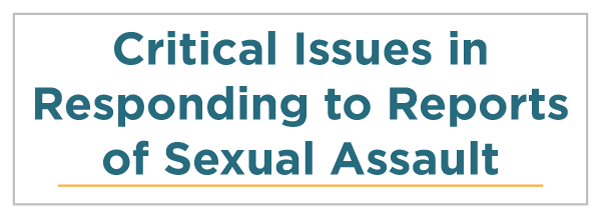 |
 |
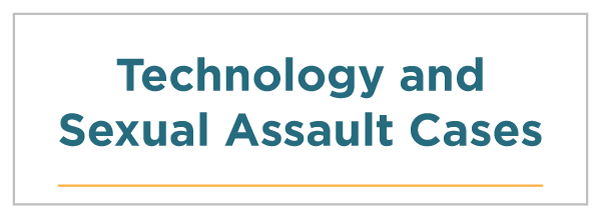 |
 |
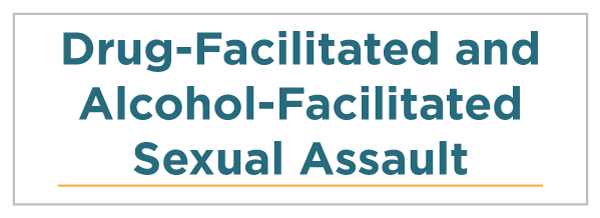 |
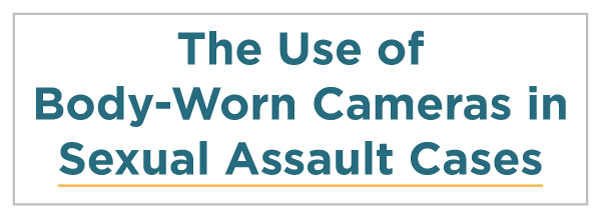 |
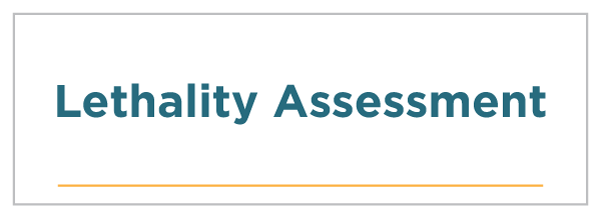 |
 |
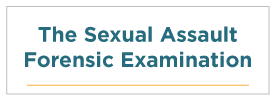 |
 |
 |
 |
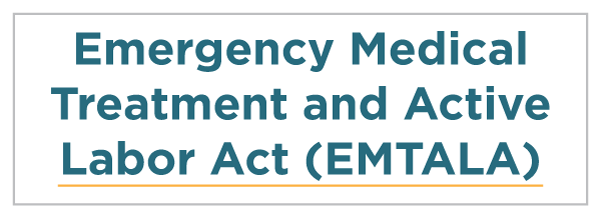 |
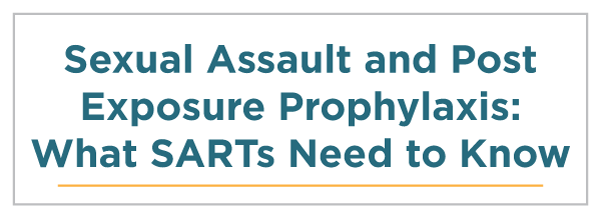 |
 |
Developments in technology continue to affect the way offenders target victims, victims report sexual assault, crimes are investigated, possible types of evidence are collected, communities respond to sexual assault, and ongoing collateral harassment of or retaliation against victims occur. This section of the SART Toolkit provides information on some concerns related to technology in sexual assault cases.
For more information about technology and Sexual Assault Against Teens, including solicitations and sexting, see the insert in the Adolescent section of the SART Toolkit.
Personal use of mobile technology is rapidly increasing, and victims of sexual assault may turn to one of the many smartphone and tablet apps available to research options after an assault, including how make a report, collect evidence, or take steps to try to prevent future assault.
SART members may seek training or additional information to increase understanding of available apps. Your SART can also work to ensure victims have access to your services by regularly checking that information for the SART itself and for each team member is correct and up to date in commonly used apps. An incorrect phone number or information may be a barrier for victims to receive services.
Apps related to sexual assault have some common goals and have been analyzed as having these common features:
Some apps focus on safety for individuals and include features such as a loud alarm, an emergency button, and automatic calls or texts to designated contacts such as friends, family, or first responders. Some apps support victims by providing information and helpful resources after an assault has occurred.
Victims can also use apps for reporting sexual assault, an option that continues to become more common, particularly on college campuses. Weaving together previous efforts to facilitate anonymous or delayed reporting options with newer mobile technology, these apps may allow victims to report an assault anonymously, or to collect immediate information about the assault to be held until a future point when the victim may want to report.
Some reporting apps provide tools for collecting and documenting evidence that can then be shared from the app with a trusted individual or with authorities. For more information on evidence from mobile devices, see the Digital Evidence section of the SART Toolkit.
Some prevention apps may incorrectly place responsibility for preventing an assault on the victim, though others are designed to support prevention efforts by encouraging bystander intervention or raising awareness about sexual assault. While there are also apps designed to document consent, it is important to consider that consent may be withdrawn at any point, even after it is noted in an app, or that victims might be coerced to document their consent where none exists.
Unfortunately, not all apps function as promised, and they may be limited by the strength of cell signal or Wi-Fi access or may simply have programming errors. Many apps have limited availability in languages other than English and may not be designed to be accessible for people with disabilities. Apps that collect private or sensitive information about victims may not have adequate security measures in place to protect victim privacy and safety. Finally, as many apps are not consistently updated, they may not contain accurate or current information.
SARTs should consider regularly checking the most common apps and websites used in their area to ensure that local service and contact information is accurate. Additionally, as apps are not constantly updated, they may not contain accurate or current information. SARTs can regularly check the most common apps and websites used in their area to ensure that local service and contact information is accurate.
For more information, including tips, information, and resources for the safe development and use of apps, see the App Safety Center [16] from the Safety Net Project at the National Network to End Domestic Violence (NNEDV).
Technology — including audio and video recordings, messaging, and social media — can all be misused by offenders to harm, threaten, or embarrass victims before, during, and after an assault. Threats to release audio or video recordings of the assault may be used specifically to prevent victims from reporting, to retaliate once a report is made, or to coerce victims to withdraw charges.
SARTs should create processes specific to the various roles of team members to guide the preservation and collection of digital evidence and help victims respond to the use of digital evidence to threaten or retaliate. SART protocols should include a consistent process to receive reports and evidence in a way that is appropriate and accepted in your jurisdiction. For example, it is important to seek out complete evidence and not to sever the chain of custody or otherwise make yourself a necessary witness in a case.
Digital evidence related to sexual assault may include —
Digital evidence can frequently be found in multiple locations and should be secured as part of an investigation. Evidence may be found on the devices or accounts of offenders or victims. Evidence may also be found on intermediary systems including networks, servers, or online service providers. The parties themselves may be unaware of all the electronic locations where evidence related to the assault might be located.
Evidence including messages, pictures, or video related to an assault may be upsetting to victims. There is a natural tendency for a victim to want to delete threatening or offensive images, videos, or communication. It is important for service providers to help victims make informed choices by describing the potential benefits of documenting and preserving these communications rather than deleting them.
When receiving a report of a sexual assault, team members should be prepared to discuss digital evidence with victims. This could relate to safety planning, deciding to report, and ongoing investigations. Law enforcement should be trained to properly receive and preserve digital evidence provided by a victim. Digital evidence can be deleted remotely if the information is on the cloud or if the person’s passwords are known. Therefore, it is essential that digital evidence be appropriately collected as soon as possible. As with other forms of evidence, team members should have clearly defined roles on how to receive, transfer, and store evidence.
Team members who are working with victims can support the victim in thinking through all the many kinds of technologies that might have been used in communications with the offender, friends, or family leading up to the assault, or in the aftermath. Team members should also ask victims if they were aware of any technology used by the offender before, during, or after the assault. This process of reviewing communications can be stressful for victims and may take time and require breaks.
Victims should be informed of the consequences related to sharing any devices with law enforcement as part of an investigation. Sometimes victims, friends of victims, or the offender are required to share their devices, such as phones, with law enforcement. Although it is not best practice, it may occur that all information on the device is deleted in the process of collecting evidence from the device. It may also take a number of days or weeks for the device to be returned.
Turning over a device to law enforcement can hinder a victim’s ability to stay connected to support systems, access benefits or services including emergency response, or fulfill requirements for work or education. This can be especially difficult for individuals with disabilities who rely on their devices to complete day-to-day tasks, young adults who connect to their peer group electronically, and those who rely on devices for work, for example.
Investigators are encouraged to develop lists of common locations for electronic evidence. Technology changes rapidly, and investigators are encouraged to stay reasonably up to date, while also using the technical assistance providers listed in this section. Many police departments do not have a digital evidence expert and may unintentionally destroy good evidence. SARTs should seek training on digital evidence, including a full understanding of the capacity of the local law enforcement agency to secure, collect, and analyze digital data. [17]
When investigating digital evidence related to a crime, duration of time from the creation or posting of the content can be crucial to a successful investigation. When an offender becomes aware of an investigation, they may try to delete or hide digital evidence. It is imperative that appropriate team members act to secure any evidence before it can be erased. During an ongoing investigation, it is critical to retrieve any digital evidence before discussing it with the perpetrator.
SARTs have tools, such as filing an evidence “preservation letter” with a social media company or other online service provider, so that evidence can be protected while a subpoena or other court order is in the process of being authorized. Many companies may be able to preserve evidence without first receiving a preservation letter, or may have their own online process for receiving these requests; it is important to be aware that policies may differ for each company. Preservation letters can also be sent to the alleged perpetrator of violence if litigation is forthcoming.
Law enforcement, emergency dispatchers, medical personnel, crime labs, and other team members who already have roles in the chain of custody for more traditional kinds of evidence should have or develop processes for transferring and storing digital evidence in a secure way. The methods for receiving and preserving digital evidence will vary according to your jurisdiction. Software and certification programs exist that can be used to help preserve some types of evidence. The methods to process digital evidence will also vary by jurisdiction or individual crime lab capabilities and areas of expertise. When having these conversations, it is important to ensure representatives from the local crime laboratories are present.
Your SART may need to become aware of how the lab processes digital evidence or support the lab to develop a policy that meets the needs of sexual assault investigations. SARTs may be useful in identifying or encouraging training on storing, transferring, preserving, or processing digital evidence that the lab may otherwise not pursue.
Community-based advocates should not be part of the chain of custody, but can help victims make informed, safe decisions about how to share evidence related to an assault with investigators. Advocates can help victims identify ways to preserve evidence if they do not want to make an immediate report. SARTs can discuss what is permissible in their jurisdiction for digital evidence to ensure consistent, accurate messages are shared with victims as they make crucial decisions about what steps to take regarding evidence from the sexual assault.
Best Practices for Seizing Electronic Evidence v.3: A Pocket Guide for First Responders (PDF, 24 pages)
This guide by the U.S. Department of Homeland Security (DHS) and the United States Secret Service identifies common issues encountered in today’s electronic crime scenes.
This page of the Law Enforcement Cyber Center (LECC) focuses on digital evidence, including frequently seized devices.
Digital Evidence in the Courtroom: A Guide for Law Enforcement and Prosecutors (PDF, 81 pages)
This NIJ guide addresses search and seizure, evidence rules, presentation of digital evidence in the courtroom, and more.
Electronic Crime Scene Investigation: A Guide for First Responders, Second Edition (PDF, 74 pages)
This report from the NIJ discusses different types of electronic devices, tools used for investigation, how to secure and document the scene, evidence collection, and more.
Electronic Crime Scene Investigation: An On-the-Scene Reference for First Responders (PDF, 50 pages)
The NIJ developed this flipbook for on-the-scene use by first responders who are responsible for identifying and collecting evidence.
Forensic Examination of Digital Evidence: A Guide for Law Enforcement (PDF, 91 pages)
This report from the National Institute of Justice (NIJ) covers policy and procedure development, evidence assessment, evidence acquisition, evidence examination, and documenting and reporting.
Scientific Working Group on Digital Evidence Best Practices for Computer Forensics (PDF, 11 pages)
This resource by the Scientific Working Group on Digital Evidence outlines best practices on topics such as evidence collection, handling, triage, transportation, and documentation.
Searching and Seizing Computers and Obtaining Electronic Evidence in Criminal Investigations (PDF, 299 pages)
This guide, published by the Office of Legal Education, provides guidance on searching and seizing computers with and without a warrant, the Stored Communications Act, electronic surveillance, and evidence.
A Simple Guide to Digital Evidence
This website developed by the National Forensic Science Technology Center (NFSTC) and the Bureau of Justice Assistance (BJA) provides an overview to various types of digital evidence and is part of a larger series, A Simplified Guide to Forensic Science.
Technology Safety, National Network to End Domestic Violence
Technology Safety addresses the intersection of technology and domestic violence, sexual assault and stalking. Technology Safety provides training, materials, and technical assistance to advocates, law enforcement, criminal justice, civil legal personnel, and others who work with victims.
TechSafety.org includes a wealth of resources on how technology is misused to harm victims, the safe and strategic use of technology by victims, and the provision of secure and confidential services. The website also features helpful tip sheets:
Bureau of Justice Assistance Training & Technical Assistance Center
The BJA National Training and Technical Assistance Center (NTTAC) serves as a major source of justice-related training and technical assistance, providing information and resources to improve criminal justice systems nationwide. BJA NTTAC offers specialized assistance to the criminal justice field by providing state, local, and tribal communities with rapid, expert, coordinated, and data-driven training and technical assistance.
Cybercrime Technical Assistance
The National White-Collar Crime Center provides technical assistance to law enforcement and regulatory agencies in the areas of cybercrime and financial crime. Technical assistance examples include providing guidance in handling financial investigations and proper handling of electronic evidence (smartphones, computers, etc.).
Law Enforcement Cyber Center (LECC)
The LECC is designed to assist police chiefs, sheriffs, commanders, patrol officers, digital forensic investigators, detectives, and prosecutors who are investigating and preventing crimes that involve technology. The LECC also directs visitors to strategic partners who provide training, technical assistance, and access to critical information.
National Computer Forensics Institute
The National Computer Forensic Institute’s innovative facility and strategic partnership substantially enhances law enforcement efforts to suppress the continually evolving and increasing number of electronic crime cases affecting communities nationwide, as well as improving and strengthening the prosecution and adjudication of those cases.
Regional Computer Forensics Laboratory (RCFL)
An RCFL is a one-stop, full-service forensics laboratory and training center devoted entirely to the examination of digital evidence in support of criminal investigations
| Back | Index | Next |
